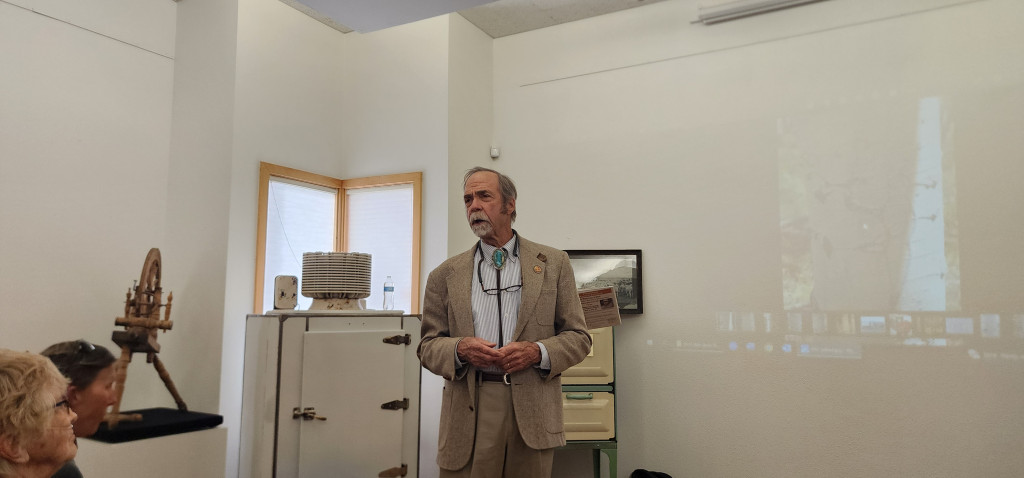Presentation of ‘The Woolly West’ a huge success

DEL NORTE — Keynote speaker Dr. Andrew Gulliford addressed a full house at the Rio Grande County Museum on Friday, March 29, for his presentation on his recently published book “The Woolly West.” The book takes a detailed look into the history of sheep herders in the Valley and surrounding southwest including firsthand accounts from sheep herders.
Gulliford opened by stating that he began his research for the book with a sincere fascination with the operations of sheep herders and it was not long before he found himself in a world that was unique, artistic, and full of devotion.
“It was something that was almost forgotten, something secret but at the same time right there in front for everyone to see,” said Gulliford as he began to explain the importance of sheep herding throughout the American West. “I created a new word; sheepscape. And I became very intimate with sheepscapes throughout the process of writing this book.”
With a little help from his wife, Gulliford attacked his research for his book with passion and increasing fascination with the diversity of sheep herding throughout southwestern Colorado and beyond. The book captivates readers with not only accurate history of the lives of sheep herders and the violent relationships they had with cattlemen as ranching took on new forms throughout history, but also with the firsthand accounts from sheepherder’s and how they lived among their flocks.
Gulliford spent hours, days and even weeks on end looking for the infamous sheep herder artwork known as arborglyphs that graced the surface of thousands of trees deep within Aspen groves in mountains around the southwest portion of Colorado.
These trees served as not only guides for fellow herders, but as canvases for works of art that are baffling for the public eye to behold. From risqué portraits of human forms to cartoons meant to lighten the burden of being alone for months, sheep herder artwork transforms the basis of the job into something much more personal.
In addition to the arborglyphs, Gulliford also came across monuments he thinks were made by sheep herders as a way to mark locations or to serve as beacons during severe weather so that lost herders could find their way. Stacked rocks that rise towards the sky can be found in several sheepscape locations and are accompanied by the arborglyphs in many cases.
The book gives insight into the San Luis Valley’s origins and provides a peek at what life was like for sheep herders throughout the West.
Gulliford’s book can be found online at Texas A&M University Press at this address www.tamupress.com/book/9781623499303/the-woolly-west/.



